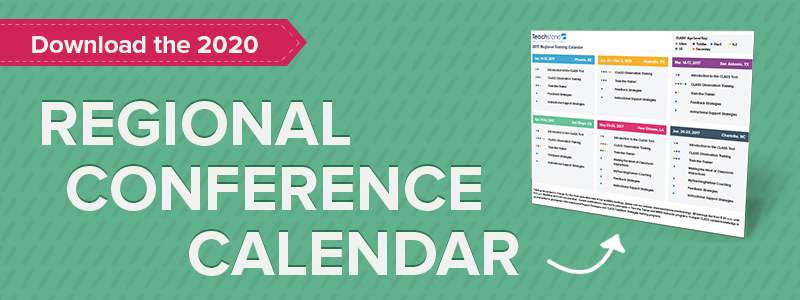
I was well steeped in the Pre-K tool when I attended my first Toddler CLASS training and I remember feeling pretty confident. The Dimensions were fairly similar to pre-K, and I know toddlers and toddler classrooms. What could possibly go wrong?
Well, I was truly surprised when I did not pass my first attempt at becoming reliable in Toddler CLASS! As disappointed in myself as I was (see Confessions of a Perfectionist: Failing CLASS Reliability) it was, in retrospect (even though a bit embarrassing) a good thing.
Clearly I was finding it challenging to make this switch. I had made some initial assumptions that Pre-K CLASS and Toddler CLASS were nearly identical—that turned out to be a detriment for me. I re-studied my manual, reviewed the Toddler Video Library, and thankfully I passed my second attempt. That was awhile back, and I am now a thoughtful Toddler (and Infant, Pre-K, and K-3) trainer. It turns out, many Pre-K Observers find the Toddler CLASS tool challenging at first. If that is happening for you too, here are some tips to support your Toddler trainings:
- Point out anywhere that indicators in Pre-K are just behavioral markers in Toddler
Why is this helpful? One mistake Pre-K trained observers make with the Toddler tool is giving behavioral markers that are familiar to them too much “weight.” For instance, in the Pre-K dimension of Concept Development “connections to the real world,” is an indicator. It is similar to the behavioral marker “teacher relates information to children’s lives and experiences” under the indicator “expansion of cognition.” However, because it is a behavioral marker, it won’t carry as much weight in the Toddler CLASS than it does in the Pre-K CLASS. I shared this insight with a particular group that got “stuck” because they were attached to their scores on a training video, having under-coded Facilitation of Learning and Development. After I shared this insight, I could see that “ah-ha” moment of clarity that thrills trainers. This strategy is now my “go-to” and I use it proactively when appropriate for the group at hand. - Remember that Behavior Guidance in Toddler CLASS is going to trip-up Pre-K Observers
Be proactive right off the mark when it comes to training Behavior Guidance. Stress to your Pre-K observers that in the Toddler tool, we are really focusing on the importance of the teacher’s active role in guiding the behavior of toddlers. That matches the developmental needs of children in toddler classrooms. It is not enough to just have well-behaved children as the footnote on page 44 of the Pre-K manual states. According to this footnote, “If there is no evidence of student misbehavior, it is assumed that effective behavioral strategies are in place and a classroom may score in the high range.” In Toddler, not so much—we need to see consistent evidence in all 3 indicators of Behavior Guidance. - During exemplar and training video discussions, be sensitive to Pre-K references
Finally, remaining tuned-in to Pre-K trained participants, and listening carefully to the contributions they offer during discussions is essential in clearing up misunderstandings. For instance, a recurring challenge comes up when Pre-K trained observers are discussing “advanced language,” an indicator present in both tools under the dimension of Language Modeling. Because “labeling” and “giving children words and phrases to say” is different evidence to consider in the Toddler tool under that indicator, the Pre-K observers may forget to include those interactions as evidence. During discussions, this is something I can pick up on, and support them as they fine-tune their Toddler CLASS lens.
I hope these tips are supportive for your Toddler CLASS trainings. What challenges and successes are you experiencing as you support observers who are “leveling-down” (or up!)?

